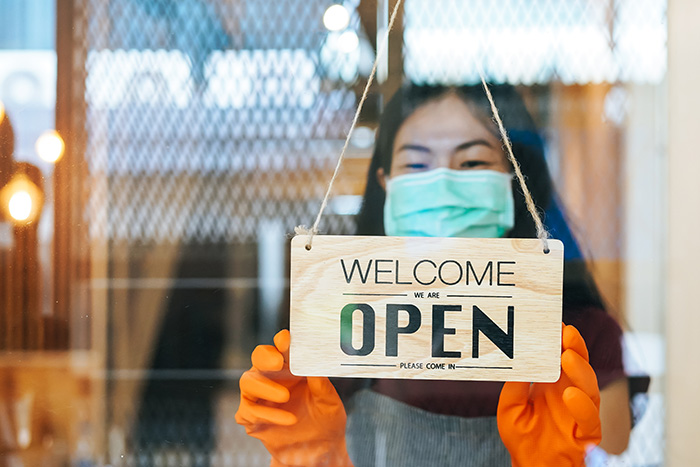With the COVID-19 pandemic resulting in lockdowns across the country, the foodservice industry has been one of the hardest hit.
How dining will look in a post-COVID world is hard to say, but it has already accelerated the restaurant industry’s digital transformation.
Safety-conscious customers are prioritizing convenience, with many using contactless-ordering for the first time. Of course, people will always want to eat out, and many have voiced their intention to support their local foodservice businesses when possible.
To position your business for success moving forward you need to embrace innovation and adopt digital solutions that meet your customer’s needs.
Your digital ordering options, menu, and customer engagement tactics should all be at the forefront of your thoughts as your plan for 2021.
With that in mind, let’s look at the effect of COVID to date, how consumers are responding, and what you can do to prepare for the “new normal.”
Covid’s Impact on the Restaurant Industry
If you are lucky enough to have had a digital ordering system and a sizable online customer base, you know the lifeline that it has provided for many.
Many casual and fine dining restaurants have seen revenues drop by up to 90% as customers use contactless ordering options.
One study found that 55% of respondents had recently used mobile apps to order food, having never done so before. Not only that, but 40% said that they wouldn’t be going back to their old way of ordering.
Customers faced with long-term financial insecurity are also looking to save money. It will likely be a long time before consumers feel comfortable resuming their pre-COVID spending patterns. Businesses that can offer online loyalty programs and special discounts have gained a competitive advantage.
How Customers Are Responding
Health-Conscious
Your customers are going to be safety conscious. Not only that, but they want to know and see the safety protocols you have put in place.
Implementing safety measures lets your customers know that you care about their health and helps put their minds at ease.
Customers are also likely to be far more vocal if you fail to implement safety procedures. This type of crowd regulation is already prevalent across Trip Advisor & Yelp and is likely to become more common.
When it comes to safety, Deloitte’s survey found that 75% of people were more likely to order from a restaurant that has a defined COVID safety plan.
Outlining your safety procedures and communicating them effectively is a great place to start.
Prioritizing Convenience
Even before the pandemic took hold, more and more customers were looking to pick up their food and get home as quickly as possible.
COVID has exacerbated the situation with contactless restaurants faring the best as lockdowns have become commonplace across the country.
The demand for off-premise options is only set to increase as customers become more aware of the online ordering options.
Deloitte’s survey found that 46% of respondents expect their future dining habits to remain at COVID-19 levels.
It’s not all bad news for restaurants that rely on on-premise diners. Many owners have already been able to configure their premises to allow for social distancing.
Some restaurants have even installed on-premise ordering apps that reduce contact between staff and customers.
Regardless of the type of foodservice you operate, finding ways to enhance the customer experience and ease safety worries is key.
Digital First
The restaurant industry is becoming a digital-first environment. As we have discussed, you can even enhance on-premise dining experiences with technology.
This need for online ordering has led many foodservice businesses to look at third-party ordering systems.
However, partnering with these companies is not always very profitable. With this in mind, some business owners have invested in creating an in-house online ordering system.
Having full control of the process provides more scope for innovation as you can use loyalty programs etc., to keep your customers engaged.
Of course, setting up a system like this can be a lot to take on. Remember, as an alternative; you can always use social media to engage your customers and build brand loyalty.
Regardless of how you do it, remember that your customers are ready to engage with you online. More than half of Deloitte’s respondents said they would be happy to order from restaurants without a customer-facing storefront (also known as “ghost kitchens”).
Accessing Your Options
It’s clear that there is a lot to think about and much will depend on the type of food service business you run and the technology at your disposal.






